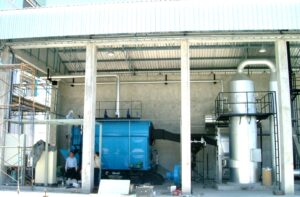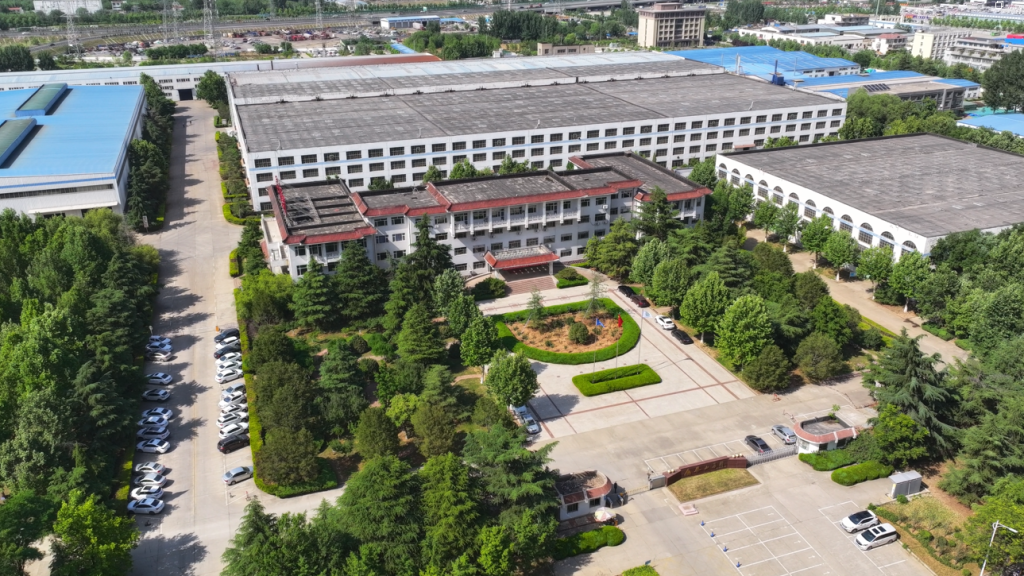Industrial power plants and heating systems require high-efficiency boilers to reduce fuel costs and emissions while maintaining stable operations. Traditional boiler technologies often struggle with fuel flexibility, incomplete combustion, and excessive pollutant emissions, leading to high operational costs and environmental penalties. To overcome these challenges, many industries are turning to Circulating Fluidized Bed (CFB) boilers, which offer superior combustion efficiency, fuel adaptability, and lower emissions.
A Circulating Fluidized Bed (CFB) boiler is an advanced combustion system that suspends solid fuel particles in an upward flow of air, creating a turbulent, fluid-like state. This process enhances fuel mixing, improves heat transfer, and ensures more complete combustion, making it highly efficient. The continuous circulation of solid particles within the furnace allows for a lower combustion temperature (800–900°C), which reduces NOx emissions and enables the use of various fuels, including coal, biomass, and waste materials. CFB boilers are widely used in power generation and industrial applications due to their high fuel flexibility, efficiency, and environmental benefits.
Understanding the working principles and key components of a CFB boiler is essential for industries seeking cost-effective and eco-friendly energy solutions. Let’s explore its structure, functions, and advantages in detail.
What Are the Main Components of a Circulating Fluidized Bed Boiler?

Circulating Fluidized Bed (CFB) boilers are widely used in power plants and industrial applications due to their high efficiency, fuel flexibility, and low emissions. However, achieving optimal performance requires a deep understanding of their key components and working principles. Failure to maintain or properly design these components can lead to inefficiencies, increased maintenance costs, and operational failures.
A Circulating Fluidized Bed Boiler consists of essential components such as the furnace (combustion chamber), cyclone separator, air distributor, fluidized bed material, heat exchangers, and fuel feed system. These elements work together to achieve efficient combustion, high heat transfer, and low emissions while handling a wide variety of fuels, including coal, biomass, and industrial waste.
Understanding these components and their functions helps operators improve fuel efficiency, reduce emissions, and maintain stable operation.
CFB boilers operate without a cyclone separator.False
The cyclone separator is a critical component of a CFB boiler as it recycles unburned fuel particles back into the combustion chamber, improving efficiency and reducing fuel waste.
Key Components of a Circulating Fluidized Bed Boiler
The following table summarizes the main components of a CFB boiler and their roles in the system:
| Component | Function |
|---|---|
| Furnace (Combustion Chamber) | Burns fuel in a fluidized state for efficient combustion and heat generation. |
| Fluidized Bed Material | Typically composed of sand or ash, it aids in even heat distribution and fuel mixing. |
| Primary & Secondary Air Systems | Controls combustion efficiency and fluidization of the bed material. |
| Cyclone Separator | Captures and recycles unburned particles back into the furnace to improve efficiency. |
| Heat Exchangers | Transfers heat from flue gases to generate steam or heat process fluids. |
| Fuel Feeding System | Feeds solid fuel into the furnace at a controlled rate. |
| Ash Removal System | Removes bottom and fly ash to maintain continuous operation. |
| Flue Gas Cleaning System | Controls emissions by removing SOx, NOx, and particulates. |
| Steam Drum & Water Circulation System | Generates steam and maintains water flow within the boiler. |
1. Furnace (Combustion Chamber)
The furnace is the primary area where fuel combustion occurs. In a CFB boiler, fuel particles are suspended in a fluidized bed of hot materials, creating a uniform temperature distribution and ensuring complete combustion. The furnace operates at relatively low temperatures (850-950°C), minimizing NOx formation.
Furnace Design Considerations:
- Refractory lining: Protects walls from high temperatures and erosion.
- Air nozzles: Evenly distribute primary air to fluidize the bed.
- Fuel injection system: Ensures consistent fuel feed and optimal mixing.
2. Fluidized Bed Material
A CFB boiler relies on a fluidized bed of solid particles (typically silica sand or ash) that acts as a heat reservoir and enhances combustion efficiency.
Advantages of the Fluidized Bed:
- Provides better fuel mixing, ensuring complete combustion.
- Enhances heat transfer and stabilizes temperature.
- Can accommodate low-grade fuels, including biomass and waste materials.
3. Primary & Secondary Air Systems
The primary air system is responsible for fluidizing the bed material, while the secondary air system ensures complete combustion by injecting additional air into the furnace.
| Air System | Function |
|---|---|
| Primary Air | Maintains fluidization of the bed material. |
| Secondary Air | Enhances mixing and completes the combustion process. |
Proper air control is critical to minimizing emissions and maximizing efficiency.
4. Cyclone Separator
The cyclone separator is a critical component that recycles unburned fuel particles back into the furnace, improving fuel efficiency and reducing waste.
How It Works:
- Flue gases carrying unburned particles enter the cyclone separator.
- The centrifugal force separates heavy particles from the gases.
- These particles are returned to the furnace for further combustion.
The cyclone separator enhances efficiency and reduces emissions by ensuring that all fuel is fully utilized.
5. Heat Exchangers (Superheater, Economizer, and Air Preheater)
Heat exchangers maximize heat recovery and improve the overall thermal efficiency of the CFB boiler.
| Heat Exchanger | Function |
|---|---|
| Superheater | Converts saturated steam into high-temperature, high-pressure steam. |
| Economizer | Preheats incoming water using waste heat from flue gases. |
| Air Preheater | Heats combustion air to improve fuel efficiency. |
6. Fuel Feeding System
The fuel feeding system supplies coal, biomass, or waste fuels into the furnace. A properly designed fuel feeder ensures steady combustion and efficient energy conversion.
Types of Fuel Feeding Mechanisms:
- Screw feeders (for fine biomass and pulverized fuels).
- Pneumatic feeders (for lightweight fuels).
- Chain conveyors (for solid fuels like coal).
7. Ash Removal System
CFB boilers produce less unburned carbon in ash due to efficient combustion. However, managing bottom and fly ash is crucial to avoiding blockages and ensuring continuous operation.
| Ash Type | Handling Method |
|---|---|
| Bottom Ash | Removed via screw conveyors or fluidized bed coolers. |
| Fly Ash | Captured using bag filters or electrostatic precipitators. |
8. Flue Gas Cleaning System
CFB boilers have built-in pollution control systems that significantly reduce SOx, NOx, and particulate emissions.
Emission Control Methods:
- Limestone Injection: Reacts with SO2 to form harmless calcium sulfate (CaSO4).
- Selective Non-Catalytic Reduction (SNCR): Reduces NOx emissions using ammonia or urea.
- Bag Filters & Electrostatic Precipitators: Capture fine particulates.
9. Steam Drum & Water Circulation System
The steam drum is the central component that separates steam from water and maintains proper water circulation within the boiler.
Key Functions of the Steam Drum:
- Separates steam and water.
- Maintains proper water levels for stable operation.
- Prevents impurities from entering the steam cycle.
How Does the Fluidization Process Work in a Circulating Fluidized Bed (CFB) Boiler?
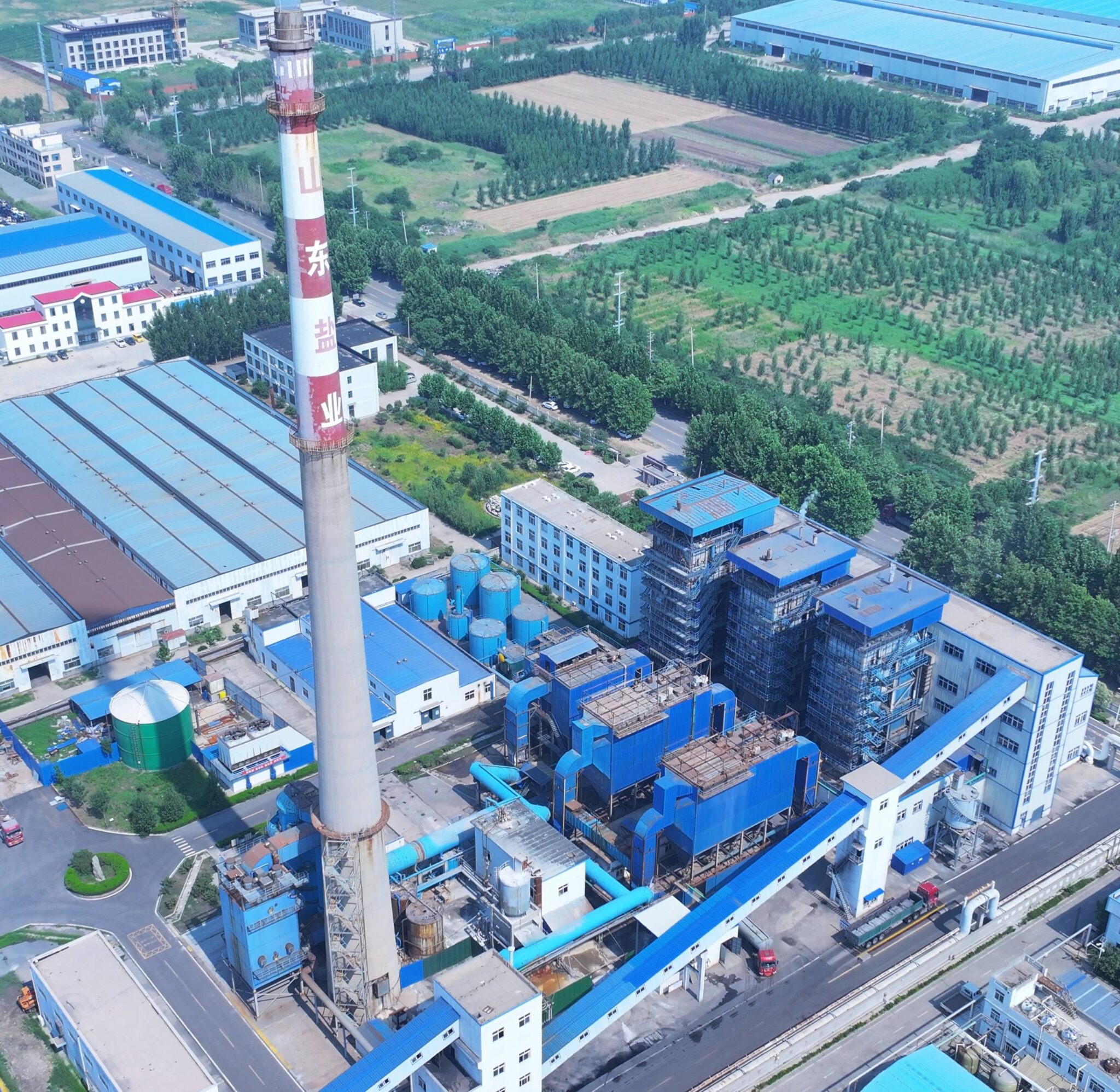
Efficient combustion in a Circulating Fluidized Bed (CFB) boiler depends on the fluidization process, where solid fuel particles are suspended and mixed with an upward flow of air, creating a highly turbulent and efficient burning environment. Without proper fluidization, combustion efficiency drops, emissions increase, and operational stability is compromised.
In a CFB boiler, the fluidization process occurs when a controlled flow of primary air lifts and suspends solid particles—such as fuel and inert bed material—creating a fluid-like state. This ensures uniform mixing, high heat transfer, and complete combustion at lower temperatures (850–950°C), which reduces NOx emissions and enhances fuel flexibility.
Understanding and optimizing the fluidization process helps improve fuel efficiency, reduce emissions, and enhance overall boiler performance.
CFB boilers operate without a fluidized bed.False
The fluidized bed is a critical component of a CFB boiler, ensuring efficient combustion, better fuel mixing, and reduced emissions.
Fundamentals of the Fluidization Process
The fluidization process in a CFB boiler is based on fluid dynamics principles, where gas velocity controls the movement and behavior of solid particles. The following table summarizes the different fluidization regimes:
| Fluidization Regime | Description | Application in CFB Boilers |
|---|---|---|
| Fixed Bed | Particles remain stationary, air flows through gaps. | Not used in CFB boilers. |
| Bubbling Fluidized Bed (BFB) | Particles begin to lift, forming large air bubbles. | Used in smaller fluidized bed boilers. |
| Circulating Fluidized Bed (CFB) | Particles remain continuously suspended, moving with the gas stream. | Used in industrial-scale boilers for efficient combustion. |
CFB boilers operate in the circulating fluidization regime, where gas velocity is high enough to suspend solid particles but low enough to retain them within the combustion chamber.
Key Components Involved in the Fluidization Process
The fluidization process depends on several critical components within the CFB boiler system:
| Component | Role in Fluidization |
|---|---|
| Air Distributor & Nozzles | Introduces primary air evenly, ensuring proper fluidization. |
| Bed Material (Sand, Ash, or Limestone) | Helps distribute heat and support fuel combustion. |
| Primary Air System | Lifts and suspends particles, controlling fluidization velocity. |
| Cyclone Separator | Captures and recycles unburned particles back to the furnace. |
| Secondary Air Injection | Enhances turbulence for complete combustion. |
Each of these components plays a vital role in maintaining stable fluidization and efficient fuel utilization.
1. Air Distributor and Nozzles
At the base of the CFB boiler furnace, the air distributor plate and nozzles control the injection of primary air, ensuring:
✅ Even fluidization of particles
✅ Prevention of dead zones
✅ Efficient combustion and mixing
Nozzle Design Considerations:
- High-velocity air jets prevent fuel and ash accumulation.
- Material selection ensures resistance to erosion.
- Adjustable airflow maintains optimal fluidization conditions.
2. Bed Material (Inert Solids & Fuel Particles)
The fluidized bed consists of a mixture of fuel particles, sand, ash, and limestone, which enhances combustion by:
– Storing and transferring heat, ensuring stable combustion temperatures.
– Mixing fuel efficiently, leading to complete burnout.
– Acting as a reaction medium, allowing sulfur capture (via limestone) for SOx reduction.
| Bed Material Type | Function in Fluidization |
|---|---|
| Sand | Provides thermal inertia and stabilizes temperature. |
| Ash | Recycled from combustion, aiding heat retention. |
| Limestone | Absorbs sulfur and reduces SOx emissions. |
Proper bed material selection and particle size control are crucial for maintaining a stable fluidized state.
3. Primary and Secondary Air Systems
The primary air system provides the initial lift force, fluidizing bed particles, while the secondary air system enhances mixing and completes the combustion process.
| Air System | Function in Fluidization |
|---|---|
| Primary Air | Fluidizes bed particles, supports initial combustion. |
| Secondary Air | Introduced at multiple levels to optimize fuel burnout. |
Correct air distribution ensures:
✅ Complete combustion with minimal unburned carbon.
✅ Lower NOx emissions by preventing localized overheating.
✅ Reduced wear and tear on boiler components.
4. Cyclone Separator & Particle Recycling
A CFB boiler’s cyclone separator plays a crucial role in maintaining fluidization efficiency by capturing and returning unburned particles to the furnace.
How It Works:
- Flue gases and entrained solids enter the cyclone.
- Centrifugal forces separate heavier particles from gases.
- Particles are redirected back to the fluidized bed.
This recycling mechanism ensures:
✅ Maximum fuel utilization
✅ Lower emissions
✅ Increased thermal efficiency
Optimizing the Fluidization Process for Maximum Efficiency
The efficiency of the fluidization process depends on several operational factors:
| Parameter | Optimal Condition | Impact on Fluidization |
|---|---|---|
| Bed Temperature | 850–950°C | Ensures efficient combustion and low NOx formation. |
| Air Velocity | 3–6 m/s | Maintains proper fluidization without excessive particle loss. |
| Particle Size | 100–500 µm | Ensures proper fluid motion and fuel-air mixing. |
| Excess Air Ratio | 1.2–1.4 | Optimizes combustion efficiency and reduces emissions. |
Adjusting these parameters improves combustion performance, reduces unburned fuel losses, and minimizes operational costs.
What Types of Fuels Can Be Used in a Circulating Fluidized Bed (CFB) Boiler?
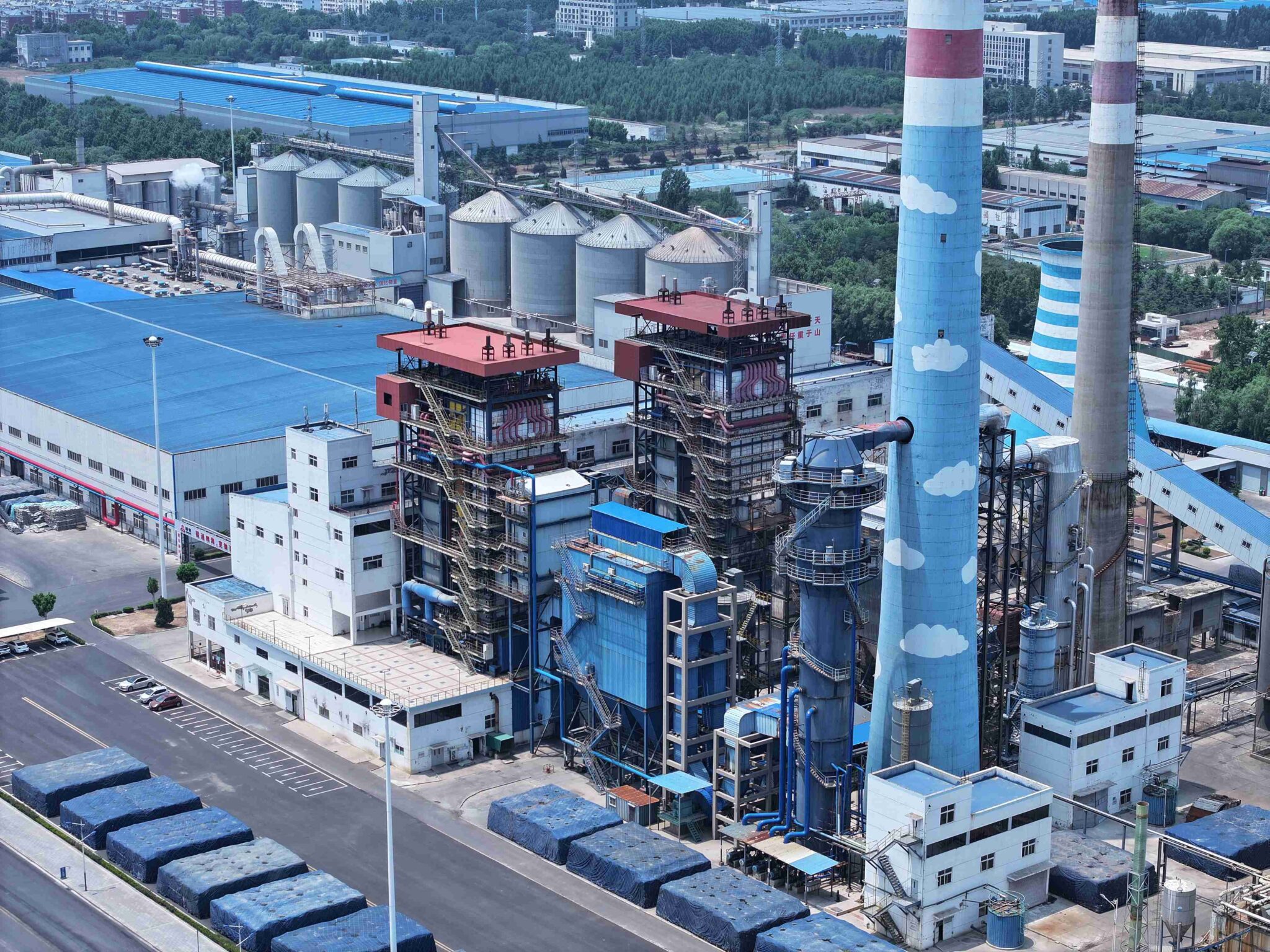
A Circulating Fluidized Bed (CFB) boiler is known for its fuel flexibility, allowing industries to burn a wide range of fuels efficiently. The ability to use various fuels, including low-grade and alternative fuels, makes CFB technology a cost-effective and environmentally friendly option for power generation and industrial heating.
CFB boilers can use coal, biomass, waste materials, and alternative fuels due to their unique fluidized bed combustion process. This ensures complete combustion, reduced emissions, and efficient heat transfer.
By selecting the right fuel type, industries can optimize efficiency, costs, and environmental impact, making CFB boilers a versatile and sustainable choice.
CFB boilers can only burn coal.False
CFB boilers are designed to burn a wide variety of fuels, including coal, biomass, waste, and alternative fuels, making them highly flexible and efficient.
Categories of Fuels Used in CFB Boilers
The following table classifies common fuel types based on their source and characteristics:
| Fuel Category | Examples | Key Features |
|---|---|---|
| Coal & Coal Derivatives | Bituminous, Sub-bituminous, Lignite, Anthracite, Petroleum Coke | High energy content, stable supply, adaptable to different grades |
| Biomass Fuels | Wood Chips, Sawdust, Rice Husk, Bagasse, Palm Kernel Shells, Peat | Renewable, lower emissions, widely available |
| Waste & Recycled Fuels | Municipal Solid Waste (MSW), Refuse-Derived Fuel (RDF), Sewage Sludge | Reduces landfill waste, cost-effective, variable energy content |
| Industrial Byproducts | Tire-Derived Fuel (TDF), Plastic Waste, Paper Sludge | Sustainable waste utilization, varying calorific values |
| Alternative Fuels | Biomass Pellets, Agricultural Residues, Industrial Waste Gases | Lower carbon footprint, often subsidized |
Each fuel type presents unique challenges and advantages, making fuel selection crucial for optimizing CFB boiler performance.
1. Coal & Coal Derivatives
Why Coal is Used in CFB Boilers?
Coal remains a widely used fuel in CFB boilers due to its high availability, affordability, and stable energy content. However, traditional coal-fired boilers suffer from high emissions of sulfur dioxide (SO₂) and nitrogen oxides (NOx).
CFB boilers address these challenges by:
✅ Operating at lower combustion temperatures (850–950°C) to minimize NOx formation
✅ Using limestone injection to capture SO₂ and reduce sulfur emissions
✅ Efficiently burning low-grade coal, including lignite and sub-bituminous coal
| Coal Type | Calorific Value (MJ/kg) | Sulfur Content | Ash Content |
|---|---|---|---|
| Anthracite | 26–30 | Low | Low |
| Bituminous | 20–28 | Medium | Medium |
| Sub-bituminous | 15–20 | Low | High |
| Lignite | 10–15 | High | High |
| Petroleum Coke | 25–30 | Very High | Low |
✅ CFB boilers can use low-grade coal and petroleum coke, reducing fuel costs.
2. Biomass Fuels
Why Biomass?
Biomass is a renewable, carbon-neutral fuel that reduces dependence on fossil fuels. CFB boilers are well-suited for biomass combustion due to their ability to handle high moisture content and variable fuel properties.
| Biomass Type | Moisture Content (%) | Ash Content (%) | Calorific Value (MJ/kg) |
|---|---|---|---|
| Wood Chips | 30–50 | Low | 15–18 |
| Sawdust | 5–15 | Low | 16–19 |
| Rice Husk | 10–20 | High | 13–16 |
| Bagasse | 40–50 | Medium | 10–14 |
| Palm Kernel Shells | 10–15 | Low | 18–21 |
✅ CFB boilers allow co-firing of biomass with coal, reducing emissions and fuel costs.
CFB boilers cannot burn biomass.False
CFB boilers are designed to burn a variety of biomass fuels, including wood chips, rice husk, and bagasse, making them an eco-friendly alternative.
3. Waste & Recycled Fuels
Turning Waste into Energy
CFB boilers provide a sustainable waste management solution by utilizing municipal solid waste (MSW), refuse-derived fuel (RDF), and industrial byproducts.
| Waste Fuel | Energy Potential | Challenges |
|---|---|---|
| Refuse-Derived Fuel (RDF) | Moderate | Variable composition |
| Municipal Solid Waste (MSW) | Low to moderate | Requires preprocessing |
| Sewage Sludge | Low | High moisture content |
✅ CFB boilers effectively burn waste, reducing landfill waste while generating energy.
4. Industrial Byproducts & Alternative Fuels
Using Byproducts for Power Generation
Many industrial byproducts can be used as fuel, reducing waste and improving sustainability.
| Byproduct Fuel | Source | Benefits |
|---|---|---|
| Tire-Derived Fuel (TDF) | Waste tires | High energy content, reduces landfill waste |
| Plastic Waste | Industrial & consumer waste | Converts non-recyclable plastics into energy |
| Paper Sludge | Pulp & paper industry | Reduces waste disposal costs |
✅ CFB technology supports a circular economy by turning waste into a valuable energy source.
Optimizing Fuel Selection for CFB Boilers
Factors to Consider When Choosing a Fuel:
| Factor | Impact on Boiler Performance |
|---|---|
| Calorific Value | Determines energy output and efficiency |
| Moisture Content | Affects combustion efficiency and heat release |
| Sulfur Content | Influences SO₂ emissions and limestone requirements |
| Ash Content | Impacts boiler fouling and maintenance needs |
| Fuel Availability & Cost | Affects long-term operating costs |
A mix of fuels, such as coal-biomass co-firing, can balance efficiency, costs, and emissions.
✅ CFB boilers provide the flexibility to switch between fuels based on cost and availability.
How Does a CFB Boiler Achieve High Efficiency and Low Emissions?
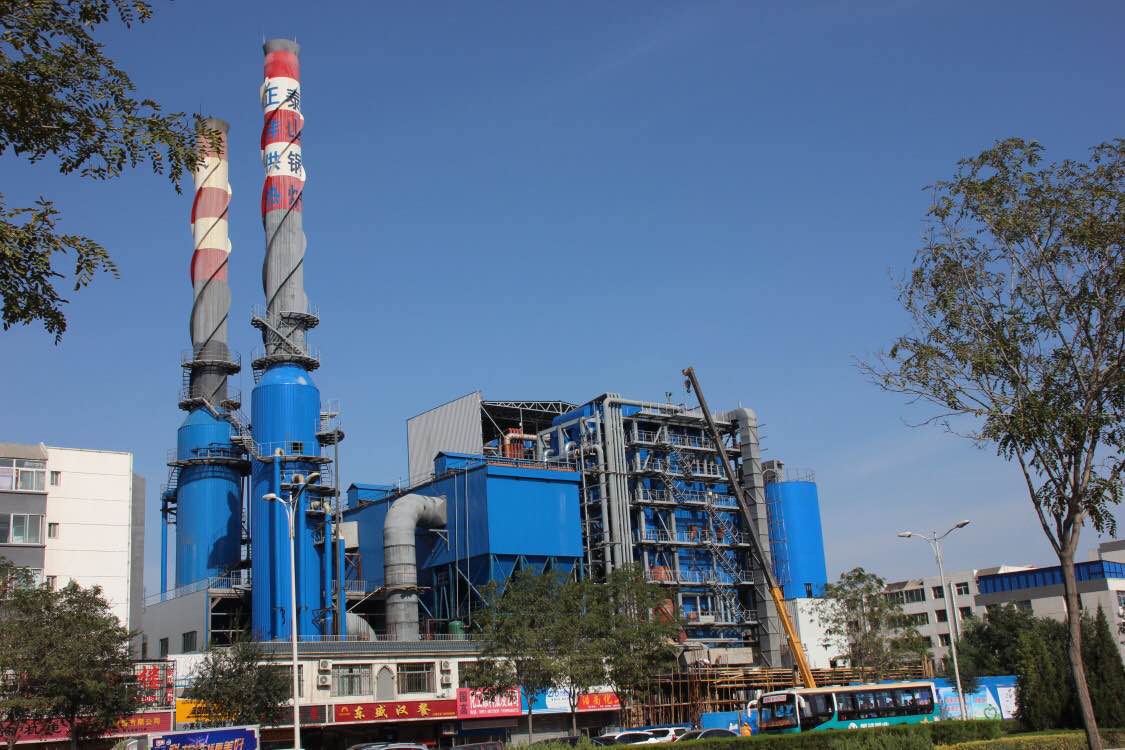
A Circulating Fluidized Bed (CFB) boiler is a highly efficient and environmentally friendly combustion technology. Its unique design allows for complete fuel utilization, low combustion temperatures, and in-furnace emissions control, resulting in high efficiency and low pollutants.
CFB boilers achieve high efficiency through improved heat transfer, long fuel residence time, and efficient combustion of a wide range of fuels. They reduce emissions by operating at lower temperatures, using in-situ desulfurization, and minimizing NOx formation.
These features make CFB boilers a preferred choice for industrial and power generation applications, providing cleaner energy solutions with minimal environmental impact.
CFB boilers have higher emissions than traditional boilers.False
CFB boilers have lower emissions due to in-furnace desulfurization and low combustion temperatures, significantly reducing NOx and SO₂ emissions.
Key Factors Contributing to High Efficiency in CFB Boilers
CFB boilers achieve high efficiency through several design advantages:
| Efficiency Factor | Mechanism | Efficiency Gain (%) |
|---|---|---|
| Long Fuel Residence Time | Ensures complete combustion of fuel particles | +5–10% |
| High Turbulence & Mixing | Enhances air-fuel interaction for efficient combustion | +5% |
| Lower Combustion Temperatures (850–950°C) | Reduces energy losses and prevents slagging | +3–7% |
| In-Bed Heat Exchangers | Improves heat recovery and steam generation | +5–8% |
| Flue Gas Recirculation | Increases heat utilization and reduces stack losses | +2–5% |
✅ Result: CFB boilers achieve thermal efficiencies above 90%, surpassing conventional boiler designs.
1. Efficient Fuel Utilization & Complete Combustion
How CFB Ensures Complete Combustion?
CFB technology keeps solid fuel particles suspended in a high-velocity air stream, ensuring complete combustion before exiting the furnace.
✅ Key advantages:
– Longer fuel residence time: Fuel remains in the combustion zone longer, leading to near-complete burnout.
– Fuel recirculation: Unburned particles are captured and reintroduced for additional combustion.
– High turbulence: Enhances air-fuel mixing, ensuring consistent combustion.
| Fuel Type | Combustion Efficiency in CFB (%) | Traditional Boiler Efficiency (%) |
|---|---|---|
| Lignite Coal | 92–95% | 85–88% |
| Biomass | 90–94% | 80–85% |
| Refuse-Derived Fuel (RDF) | 85–90% | 75–80% |
✅ CFB technology extracts more energy from fuel compared to conventional boilers.
2. Low Combustion Temperatures Reduce NOx Emissions
Why is NOx Formation Lower in CFB Boilers?
Nitrogen oxides (NOx) form when nitrogen in fuel and air reacts at high temperatures. CFB boilers operate at 850–950°C, significantly lower than pulverized coal (PC) boilers (~1,400°C).
| Boiler Type | Typical Combustion Temperature (°C) | NOx Emissions (mg/Nm³) |
|---|---|---|
| Pulverized Coal (PC) Boiler | 1,400–1,600 | 500–1,000 |
| Circulating Fluidized Bed (CFB) Boiler | 850–950 | 50–200 |
✅ Lower combustion temperatures in CFB boilers reduce thermal NOx formation by up to 80%.
CFB boilers produce more NOx emissions than conventional coal boilers.False
CFB boilers operate at lower combustion temperatures (850–950°C), significantly reducing NOx emissions compared to conventional coal-fired boilers.
3. In-Furnace Desulfurization for SO₂ Reduction
How Does CFB Reduce SO₂ Emissions?
Sulfur dioxide (SO₂) forms when sulfur in fuel reacts with oxygen during combustion. CFB boilers use in-bed limestone injection to capture sulfur before it escapes.
✅ Key process:
– Limestone (CaCO₃) is added to the furnace.
– At high temperatures, CaCO₃ decomposes into CaO and CO₂.
– CaO reacts with SO₂ to form solid CaSO₄ (gypsum), which is removed with ash.
| Fuel Type | Sulfur Content (%) | SO₂ Removal Efficiency (%) |
|---|---|---|
| Bituminous Coal | 1.5–2.5 | 85–95% |
| Lignite Coal | 0.5–1.5 | 80–90% |
| Petroleum Coke | 5.0+ | 90–95% |
✅ CFB boilers reduce SO₂ emissions by up to 95% without requiring external scrubbers.
4. Advanced Heat Recovery & High Steam Efficiency
How CFB Maximizes Heat Utilization?
CFB boilers incorporate multiple heat recovery techniques to improve steam cycle efficiency:
| Heat Recovery Component | Function | Efficiency Gain (%) |
|---|---|---|
| In-Bed Heat Exchangers | Transfers heat from combustion bed to steam cycle | +5–8% |
| Economizer | Recovers heat from flue gases to preheat feedwater | +3–6% |
| Air Preheater (APH) | Preheats combustion air to reduce fuel consumption | +2–4% |
✅ These systems enable CFB boilers to achieve high thermal efficiency (90%+).
5. Low Particulate Emissions with Advanced Ash Handling
Why Do CFB Boilers Have Low PM Emissions?
Particulate matter (PM) emissions are controlled using:
✅ Cyclone Separators – Capture unburned particles for recirculation.
✅ Electrostatic Precipitators (ESP) & Bag Filters – Remove fine ash before flue gas exits the stack.
| Boiler Type | PM Emissions (mg/Nm³) |
|---|---|
| Pulverized Coal (PC) Boiler | 150–250 |
| Circulating Fluidized Bed (CFB) Boiler | 30–100 |
✅ CFB boilers have 50–80% lower PM emissions compared to traditional boilers.
What Are the Advantages of Circulating Fluidized Bed Boilers Over Conventional Boilers?
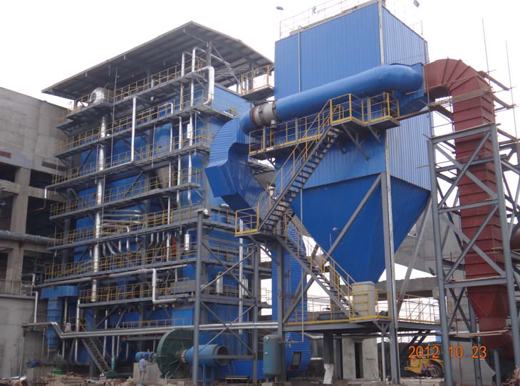
Industrial and power generation facilities constantly seek more efficient and environmentally friendly boiler technologies. Conventional boilers, such as Pulverized Coal (PC) boilers and Grate-fired boilers, have been widely used for decades but face challenges in fuel flexibility, efficiency, and emissions control.
Circulating Fluidized Bed (CFB) boilers offer a superior alternative by delivering higher fuel flexibility, better combustion efficiency, and lower environmental impact compared to conventional boiler systems.
CFB boilers provide key advantages over conventional boilers, including superior fuel flexibility, higher efficiency, lower emissions, reduced maintenance, and improved load-following capabilities. Their unique fluidized bed technology ensures complete fuel combustion, minimizes NOx and SO₂ emissions, and enables the use of low-quality fuels without performance loss.
These advantages make CFB boilers an ideal choice for industrial applications, ensuring cost-effective, reliable, and sustainable energy generation.
CFB boilers have lower efficiency than conventional boilers.False
CFB boilers achieve thermal efficiencies above 90%, surpassing conventional boilers due to better heat transfer, longer fuel residence time, and advanced combustion technology.
1. Superior Fuel Flexibility
Why Do CFB Boilers Handle a Wider Range of Fuels?
Conventional boilers rely on specific high-quality fuels (such as pulverized coal), while CFB boilers can efficiently burn a diverse range of fuels, including low-quality and alternative fuels.
| Fuel Type | CFB Boiler Suitability | Conventional Boiler Suitability |
|---|---|---|
| High-Rank Bituminous Coal | ✅ Excellent | ✅ Good |
| Low-Rank Lignite Coal | ✅ Excellent | ❌ Poor |
| Biomass (Wood, Agricultural Waste) | ✅ Excellent | ❌ Limited |
| Refuse-Derived Fuel (RDF) | ✅ Good | ❌ Poor |
| Petroleum Coke | ✅ Good | ❌ Poor |
| Industrial Waste & Sludge | ✅ Good | ❌ Not Feasible |
✅ CFB boilers can burn low-cost and low-quality fuels, reducing fuel expenses while maintaining high efficiency.
2. Higher Combustion Efficiency & Complete Fuel Utilization
How CFB Technology Enhances Combustion?
Conventional boilers burn fuel in a fixed or suspended flame, leading to incomplete combustion and lower efficiency. CFB boilers use fluidized bed combustion, where fuel particles remain suspended in an air and gas mixture, ensuring:
✅ Longer fuel residence time → Complete combustion of fuel.
✅ Continuous recirculation of unburned particles → Maximum fuel utilization.
✅ Efficient heat transfer → Higher boiler efficiency.
| Boiler Type | Combustion Efficiency (%) | Fuel Utilization (%) |
|---|---|---|
| Circulating Fluidized Bed (CFB) Boiler | 92–96% | 95–98% |
| Pulverized Coal (PC) Boiler | 85–90% | 85–90% |
| Grate-Fired Boiler | 75–85% | 80–85% |
✅ Result: CFB boilers extract more energy from the same amount of fuel, reducing operational costs.
CFB boilers waste more fuel than conventional boilers.False
CFB boilers achieve up to 96% combustion efficiency due to long fuel residence time and recirculation, significantly reducing fuel waste.
3. Lower NOx and SO₂ Emissions
How Do CFB Boilers Reduce NOx and SO₂?
CFB boilers naturally reduce emissions without requiring costly external treatment systems:
✅ Low NOx Formation:
– CFB boilers operate at lower combustion temperatures (850–950°C), reducing thermal NOx formation.
– NOx emissions are 50–80% lower than in conventional PC boilers.
✅ In-Furnace SO₂ Removal:
– Limestone is added directly into the combustion chamber.
– It reacts with sulfur in fuel to form solid CaSO₄ (gypsum), removing up to 95% of SO₂ emissions.
– No need for expensive flue gas desulfurization (FGD) systems.
| Boiler Type | NOx Emissions (mg/Nm³) | SO₂ Removal Efficiency (%) |
|---|---|---|
| Circulating Fluidized Bed (CFB) Boiler | 50–200 | 85–95% |
| Pulverized Coal (PC) Boiler | 500–1,000 | 50–75% |
✅ CFB technology ensures compliance with stringent environmental regulations.
CFB boilers require additional NOx and SO₂ control systems.False
CFB boilers inherently reduce NOx and SO₂ emissions through low-temperature combustion and in-furnace desulfurization, eliminating the need for costly external systems.
4. Reduced Slagging & Fouling → Lower Maintenance Costs
How Does CFB Prevent Slagging and Fouling?
Conventional boilers operate at higher temperatures, causing:
❌ Ash fusion & slagging → Tube failures & frequent shutdowns.
❌ Fouling on heat exchanger surfaces → Reduced heat transfer efficiency.
✅ CFB boilers prevent these issues by:
– Operating at low combustion temperatures (850–950°C).
– Keeping fuel particles in motion, preventing ash deposits on surfaces.
| Boiler Type | Slagging/Fouling Risk | Maintenance Frequency |
|---|---|---|
| Circulating Fluidized Bed (CFB) Boiler | Low | Low |
| Pulverized Coal (PC) Boiler | High | High |
| Grate-Fired Boiler | Very High | Very High |
✅ CFB boilers require less maintenance, resulting in higher uptime and lower costs.
5. Excellent Load-Following & Operational Flexibility
Why Are CFB Boilers Better for Variable Loads?
Conventional boilers struggle to adapt to fluctuating energy demands, leading to inefficiencies and higher emissions.
✅ CFB boilers excel in:
– Fast load response: Can quickly adjust output without efficiency loss.
– Stable operation at part load: Runs efficiently at 30–100% capacity.
– Better integration with renewable energy: Ideal for hybrid systems with solar or wind power.
| Boiler Type | Load Range (%) | Efficiency at Part Load (%) |
|---|---|---|
| Circulating Fluidized Bed (CFB) Boiler | 30–100 | 85–92% |
| Pulverized Coal (PC) Boiler | 60–100 | 75–85% |
| Grate-Fired Boiler | 80–100 | 70–80% |
✅ CFB boilers are more flexible and stable under varying energy demands.
What Industries Benefit the Most from Using CFB Boilers?
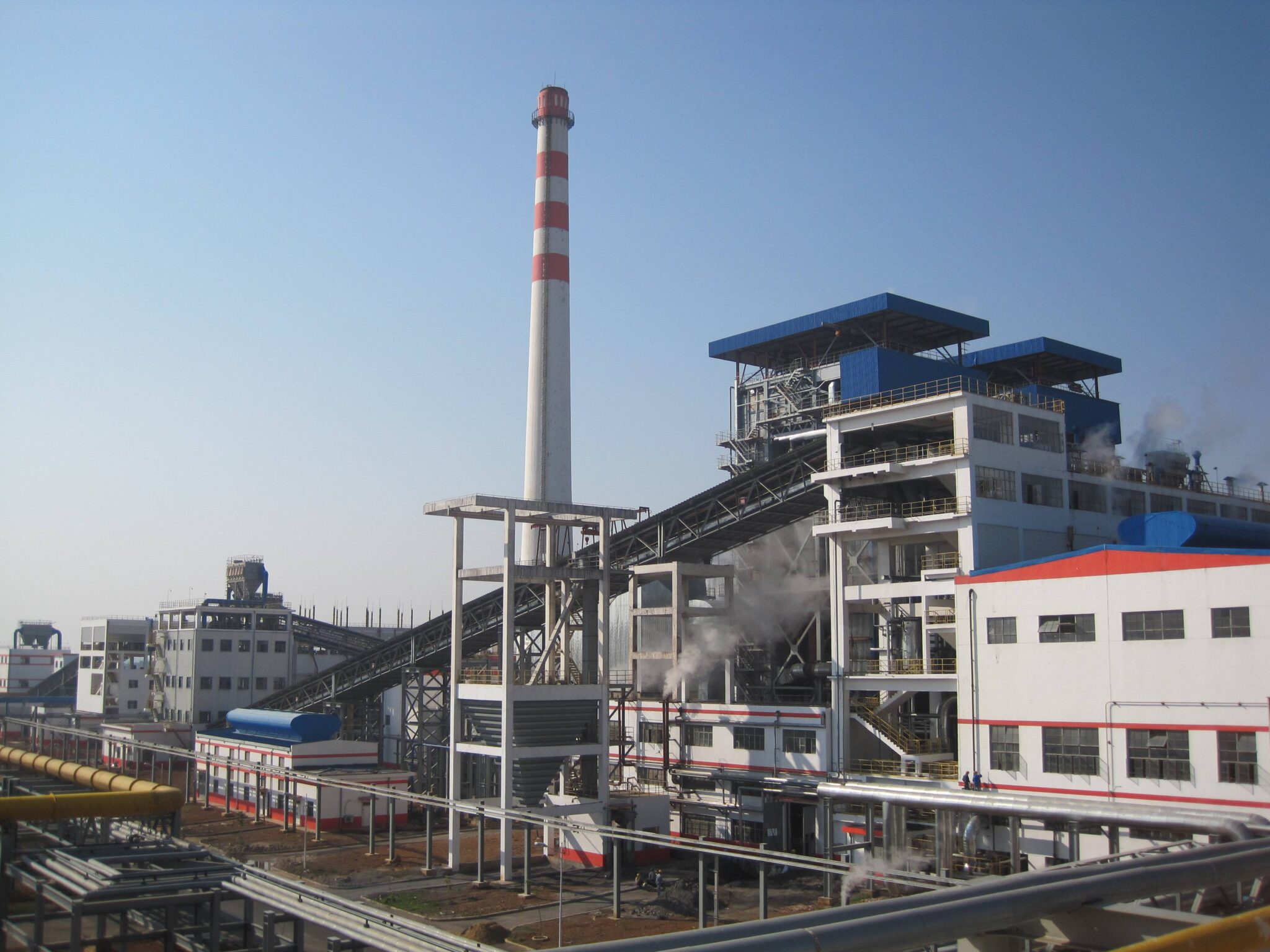
Industries that rely on high-efficiency, fuel-flexible, and low-emission energy solutions are constantly seeking cost-effective and environmentally friendly boiler technologies. Traditional boilers often struggle with fuel limitations, high operational costs, and strict emission regulations.
Circulating Fluidized Bed (CFB) boilers provide an advanced solution by offering superior fuel flexibility, higher combustion efficiency, and lower emissions, making them ideal for industries with high energy demands and sustainability goals.
The industries that benefit the most from CFB boilers include power generation, chemical processing, steel production, cement manufacturing, pulp and paper mills, waste-to-energy plants, and oil refineries. CFB technology allows these industries to burn a wide range of fuels, reduce emissions, and achieve cost savings while maintaining high efficiency.
These advantages make CFB boilers a preferred choice for industries looking to optimize operational efficiency and meet environmental regulations.
CFB boilers are only suitable for coal-fired power plants.False
CFB boilers are widely used in various industries, including biomass power plants, cement kilns, steel mills, and chemical processing plants due to their fuel flexibility.
1. Power Generation Industry
Why Are CFB Boilers Ideal for Power Plants?
Power plants require high-capacity, efficient, and fuel-flexible boilers to ensure stable electricity generation. CFB boilers enable power producers to:
✅ Burn low-grade and alternative fuels – lignite, biomass, petroleum coke, and waste fuels.
✅ Achieve high combustion efficiency – up to 96% fuel utilization.
✅ Reduce NOx and SO₂ emissions – meeting strict environmental regulations.
✅ Operate flexibly under varying load conditions – ideal for renewable energy integration.
| Feature | CFB Boiler | Conventional Pulverized Coal (PC) Boiler |
|---|---|---|
| Fuel Type | Coal, biomass, RDF, waste fuels | High-quality coal only |
| Efficiency (%) | 90–96% | 85–90% |
| NOx Emissions (mg/Nm³) | 50–200 | 500–1000 |
| SO₂ Removal Efficiency (%) | 85–95% | 50–75% |
| Load-Following Capability | Excellent (30–100% load) | Limited (60–100% load) |
✅ Result: CFB boilers improve fuel cost savings, environmental compliance, and operational flexibility for power generation plants.
2. Cement Industry
How Do CFB Boilers Benefit Cement Kilns?
The cement industry requires consistent high-temperature heat for clinker production, making it one of the most energy-intensive industries. CFB boilers provide:
✅ Fuel flexibility – Can burn coal, petcoke, waste fuels, and biomass.
✅ High heat recovery – Efficient heat utilization in preheater and calciner units.
✅ Lower emissions – Integrated SO₂ capture and low NOx formation.
| Energy Requirement | CFB Boiler Application in Cement Plants |
|---|---|
| Preheating | Uses CFB waste heat for drying raw materials |
| Clinker Calcination | Provides consistent high-temperature combustion |
| Power Generation | Supplies electricity for cement production |
✅ Result: CFB boilers reduce fuel costs, improve heat efficiency, and minimize emissions in cement production.
3. Steel Industry (Metallurgical Processes)
Why Do Steel Plants Use CFB Boilers?
Steel production requires large amounts of heat and steam for metallurgical processes, such as sintering, blast furnaces, and rolling mills. CFB boilers provide:
✅ Ability to burn low-cost fuels – Uses waste coal, coke oven gas, and biomass.
✅ Stable high-temperature steam – Supports continuous steel production.
✅ High efficiency with waste heat recovery – Reduces energy consumption.
| Steel Process | CFB Boiler Application |
|---|---|
| Sintering & Pelletizing | Provides hot gases for ore processing |
| Blast Furnaces | Supplies steam for preheating & drying |
| Rolling Mills | Generates high-pressure steam for steel shaping |
✅ Result: CFB boilers enhance energy efficiency and cost-effectiveness in steel manufacturing.
4. Chemical & Petrochemical Industry
How Do CFB Boilers Support Chemical Processing?
Chemical plants require reliable and consistent steam for chemical reactions, distillation, and drying processes. CFB boilers offer:
✅ Multi-fuel capability – Can use biomass, industrial waste, and byproducts.
✅ Continuous steam generation – Ensures uninterrupted production.
✅ Lower environmental impact – Reduces toxic gas emissions.
| Chemical Process | CFB Boiler Role |
|---|---|
| Distillation | Provides steady steam for separation |
| Polymerization | Supplies heat for chemical reactions |
| Drying & Evaporation | Generates hot gases for solvent removal |
✅ Result: CFB boilers optimize energy usage and minimize environmental impact in chemical production.
5. Pulp & Paper Industry
How Do CFB Boilers Improve Paper Mills?
Paper manufacturing requires high volumes of steam and electricity for drying pulp and producing finished paper. CFB boilers deliver:
✅ High efficiency in steam generation – Up to 96% efficiency.
✅ Ability to burn wood waste and black liquor – Reduces fuel costs.
✅ Lower emissions – Meets environmental sustainability targets.
| Pulp & Paper Process | CFB Boiler Benefit |
|---|---|
| Pulp Digestion | Provides high-pressure steam |
| Drying & Pressing | Supplies consistent heat |
| Power Cogeneration | Generates electricity for mill operations |
✅ Result: CFB boilers help paper mills cut fuel costs and enhance sustainability.
6. Waste-to-Energy & Biomass Power Plants
Why Are CFB Boilers Perfect for Waste-Fired Power Plants?
Waste-to-energy plants convert municipal solid waste (MSW), agricultural residues, and industrial waste into usable power. CFB boilers enable:
✅ Efficient burning of biomass & refuse-derived fuel (RDF).
✅ Low emissions – Meets strict air quality regulations.
✅ High fuel flexibility – Uses biomass, waste, and low-grade fuels.
| Fuel Type | CFB Boiler Suitability |
|---|---|
| Municipal Solid Waste (MSW) | ✅ Excellent |
| Agricultural Residues | ✅ Excellent |
| Industrial Waste & RDF | ✅ Good |
✅ Result: CFB boilers maximize energy recovery from waste materials while meeting emission standards.
🔍 Conclusion
Circulating Fluidized Bed Boilers have transformed industrial heating and power generation by offering a cleaner, more versatile, and highly efficient solution. Their ability to handle a wide range of fuels, operate at lower combustion temperatures, and minimize emissions makes them an ideal choice for industries seeking cost-effective and environmentally friendly energy solutions. By understanding how CFB boilers work and their numerous benefits, industries can make informed decisions that improve operational efficiency and sustainability.
📞 Contact Us
💡 Need expert advice on selecting or maintaining a CFB boiler? Our team of professionals is here to assist you with customized solutions tailored to your energy needs.
🔹 Let’s build a more efficient and sustainable future together! 🚀
FAQ
What is a circulating fluidized bed boiler?
A circulating fluidized bed (CFB) boiler is an advanced combustion technology that uses high-velocity air to suspend solid fuel particles, allowing efficient and clean energy generation.
How does a CFB boiler work?
A CFB boiler works by suspending fuel particles in a stream of upward-flowing air, promoting complete combustion, improved heat transfer, and lower emissions compared to conventional boilers.
What are the advantages of a CFB boiler?
CFB boilers offer high fuel flexibility, lower NOx and SOx emissions, improved thermal efficiency, and the ability to burn low-grade fuels efficiently.
What types of fuels can a CFB boiler use?
CFB boilers can burn a variety of fuels, including coal, biomass, petroleum coke, and waste materials, making them a versatile option for industrial applications.
Where are circulating fluidized bed boilers used?
CFB boilers are commonly used in power plants, chemical industries, and waste-to-energy plants due to their ability to handle diverse fuels and achieve high efficiency.
References
- Circulating Fluidized Bed Boilers – https://www.energy.gov
- Working Principle of CFB Boilers – https://www.sciencedirect.com
- Advantages of CFB Technology – https://www.researchgate.net
- CFB Boiler Efficiency Studies – https://www.mdpi.com
- Fluidized Bed Combustion Explained – https://www.iea.org
- Fuel Types for CFB Boilers – https://www.bioenergyconsult.com
- Industrial Applications of CFB Boilers – https://www.sciencedirect.com
- CFB vs. Pulverized Coal Boilers – https://www.epa.gov
- Emission Control in CFB Boilers – https://www.energysavingtrust.org.uk
- Future of CFB Technology – https://www.automation.com

